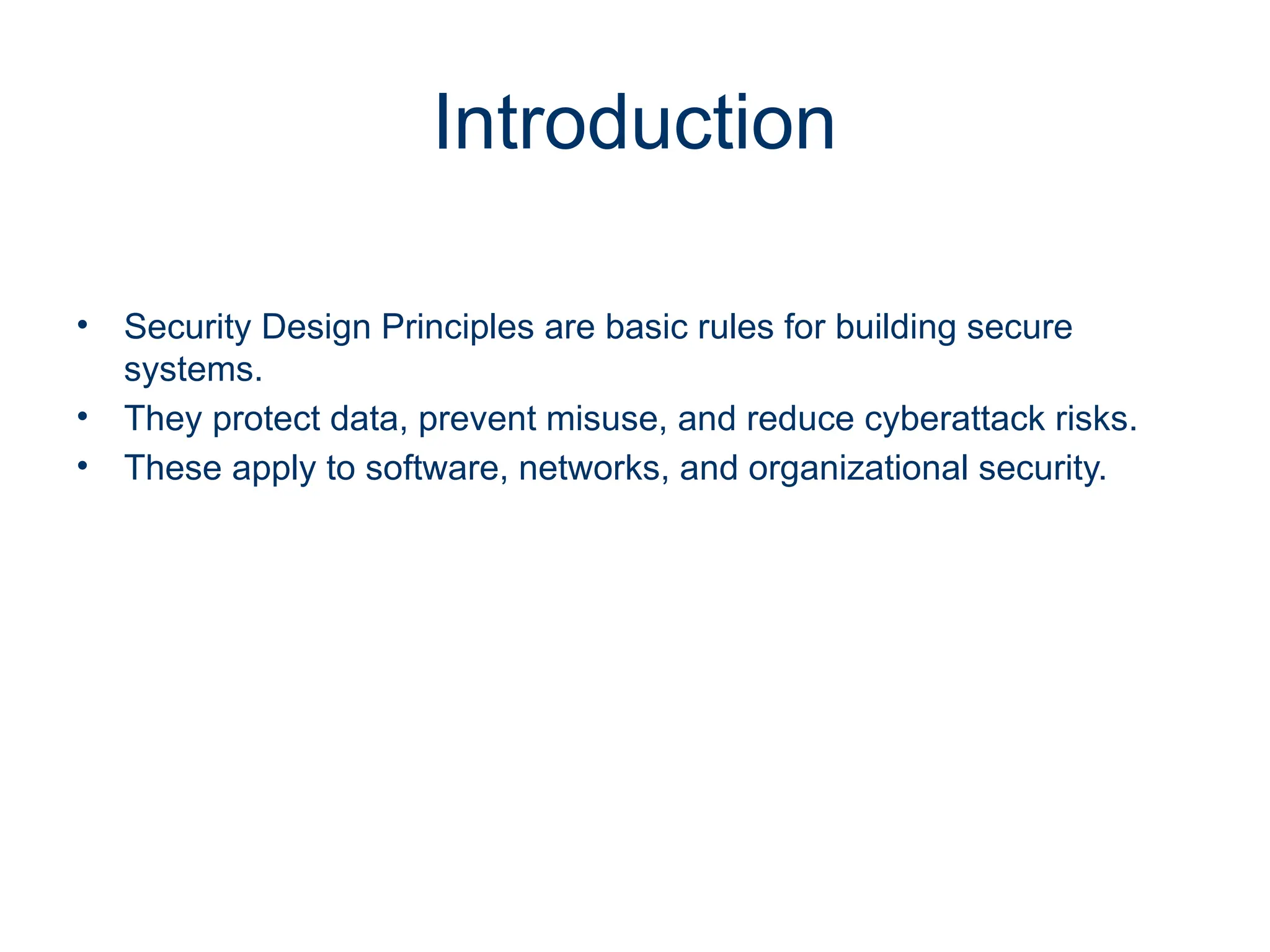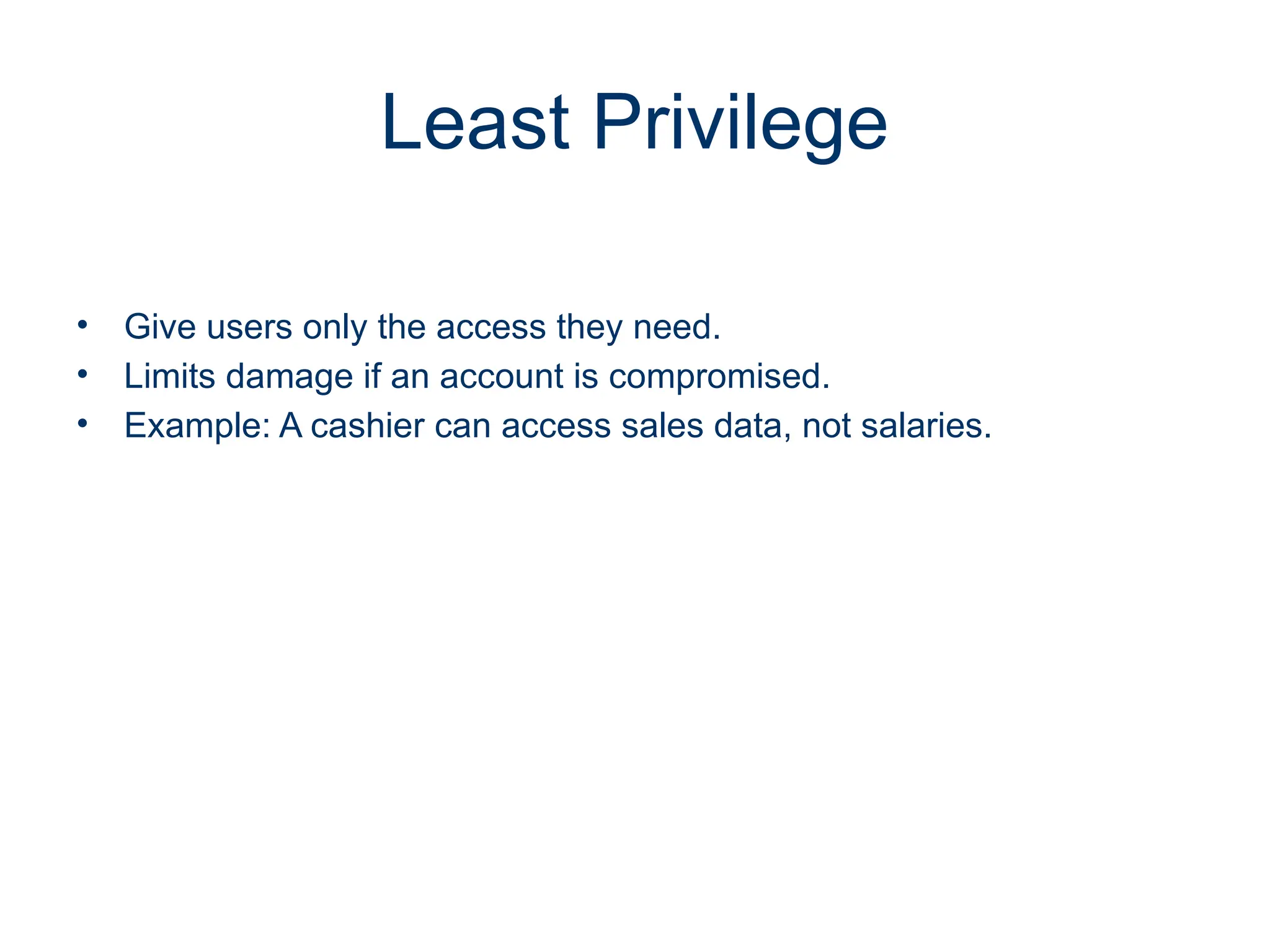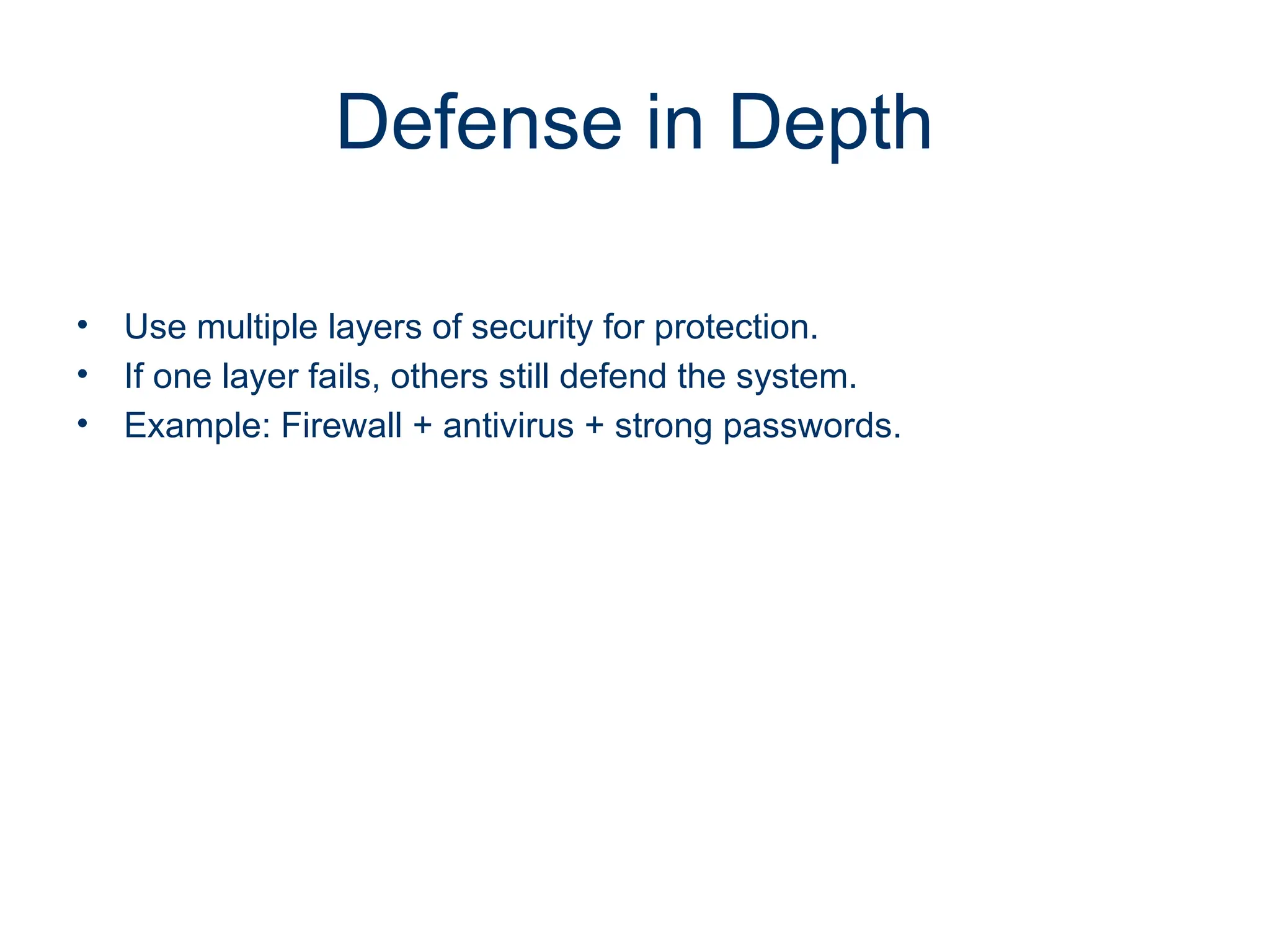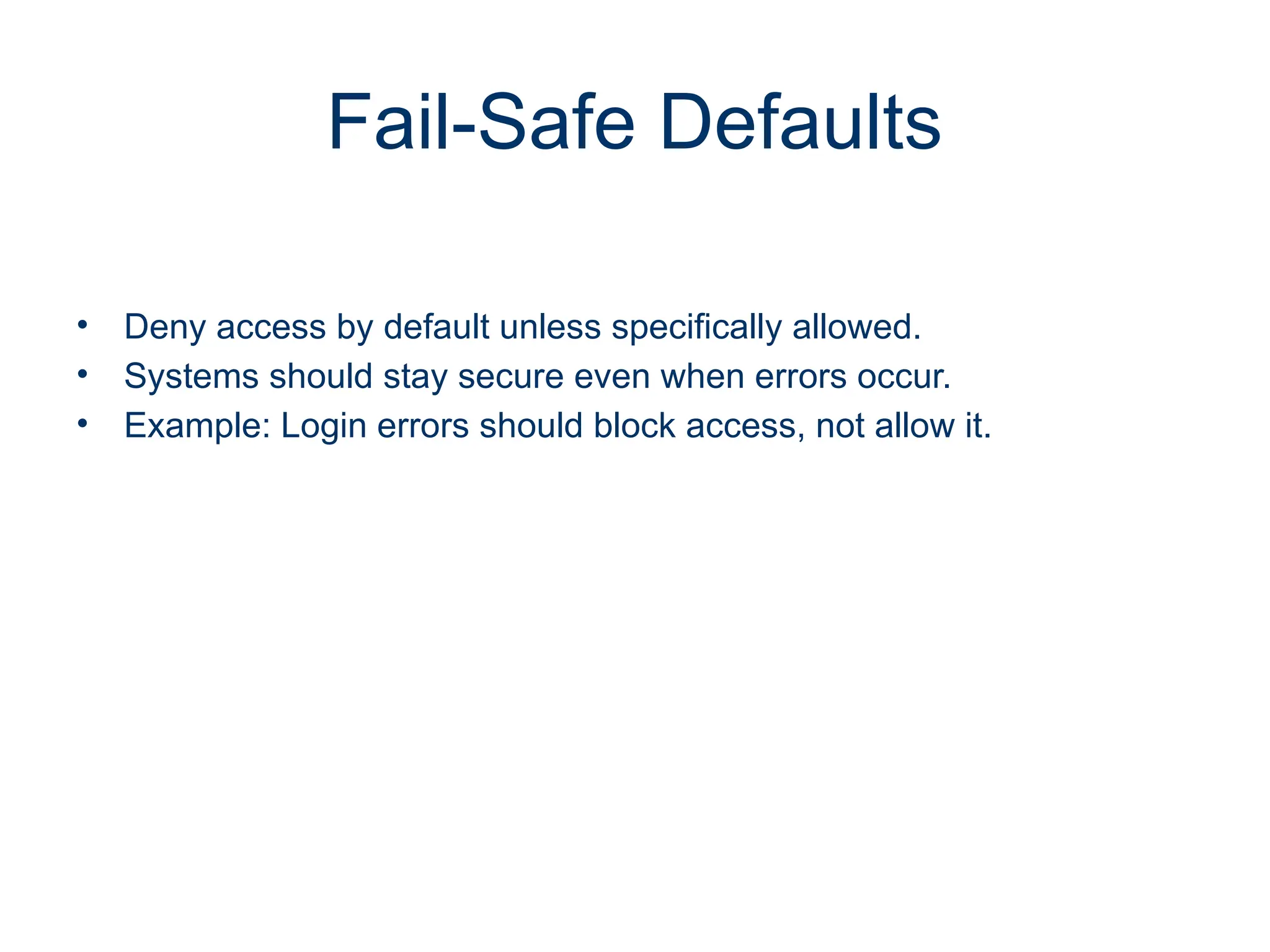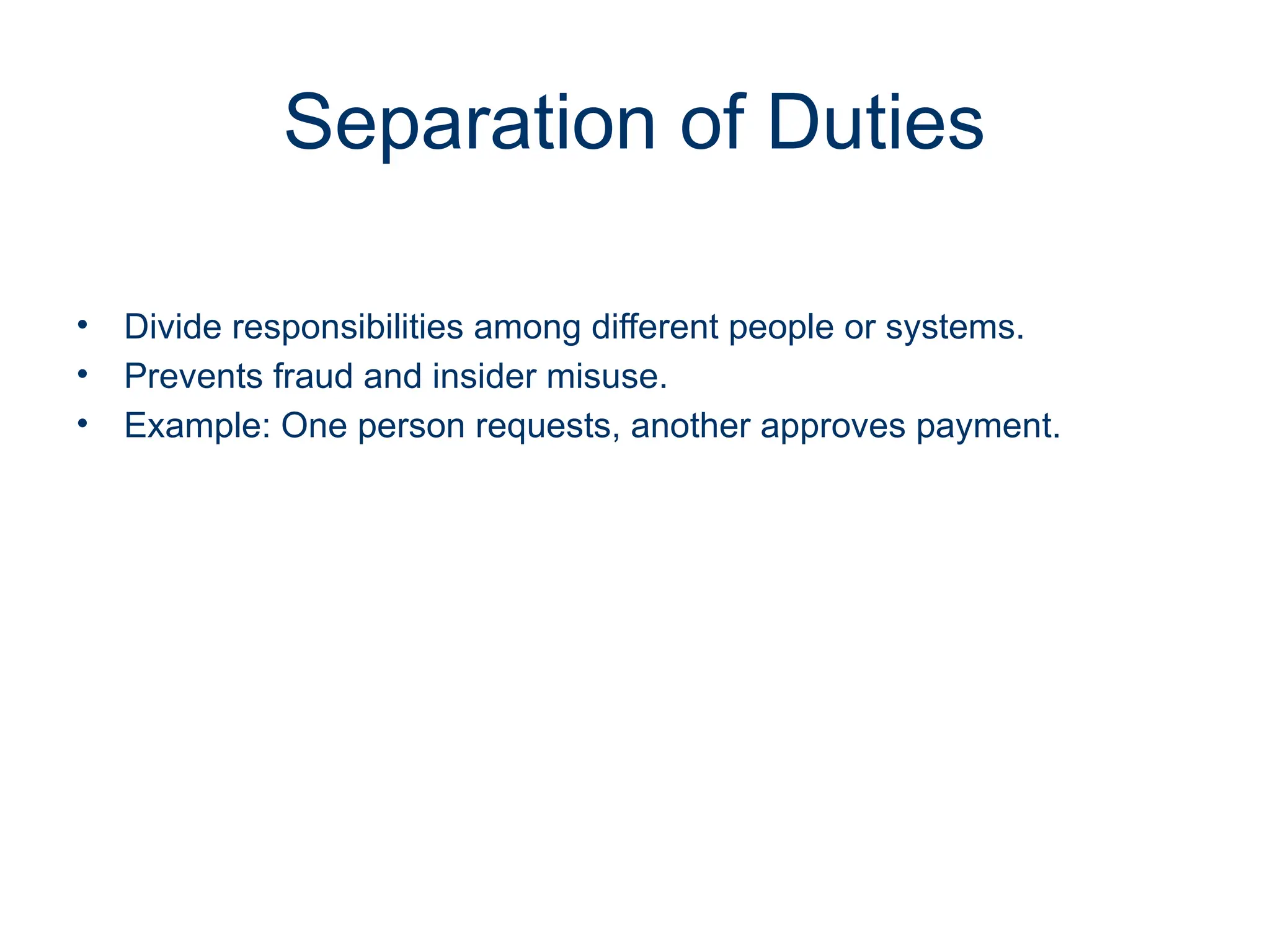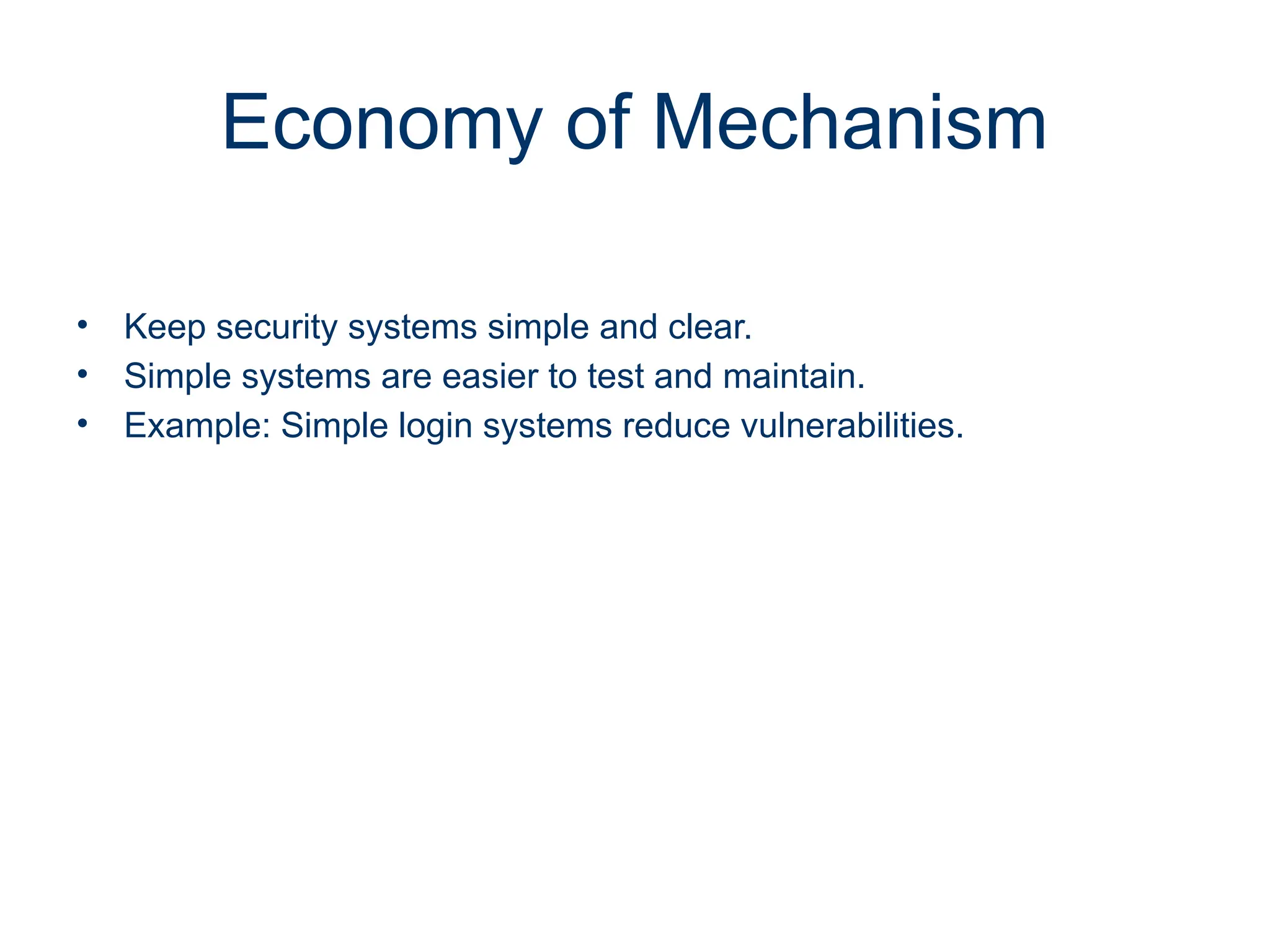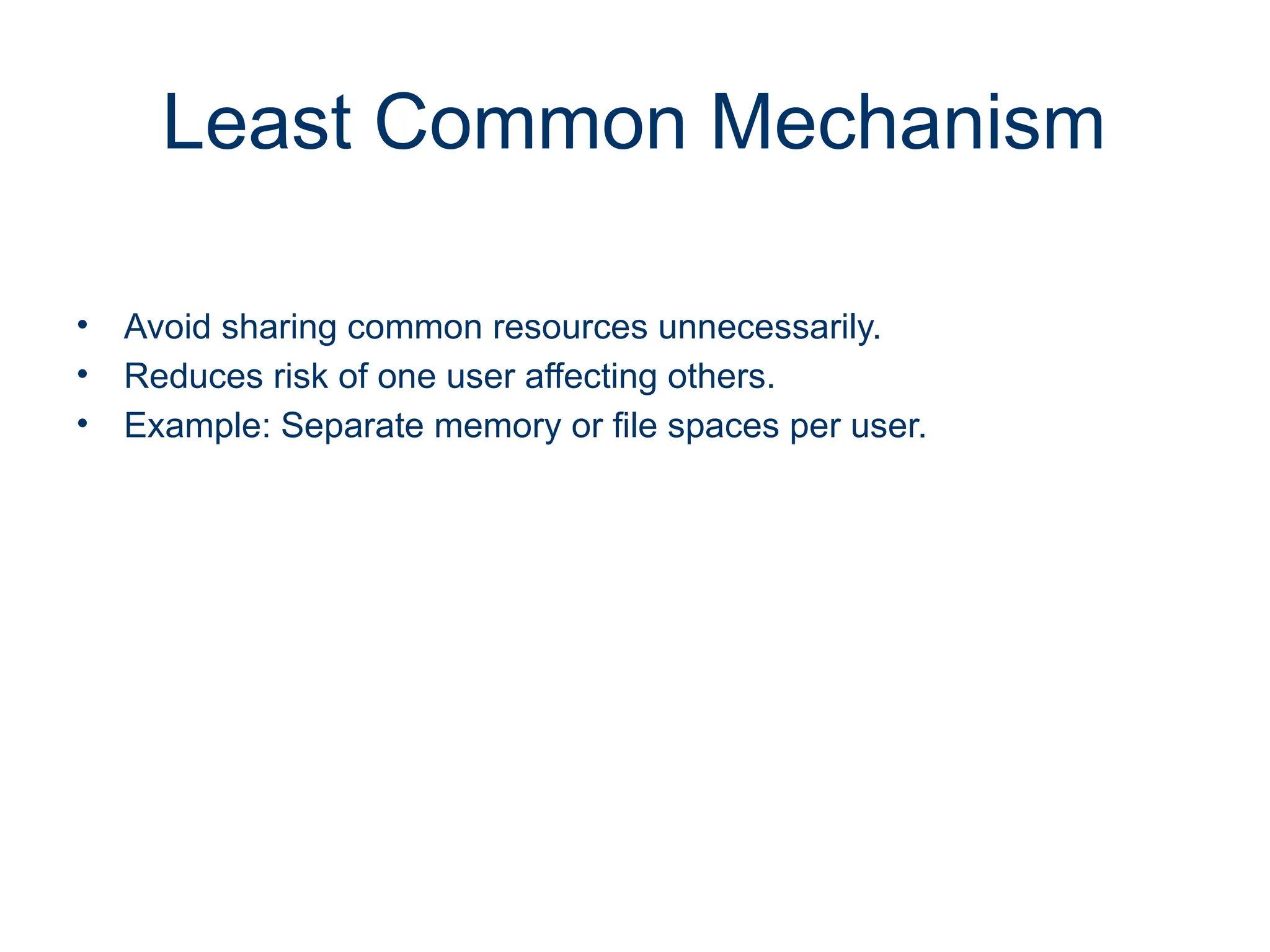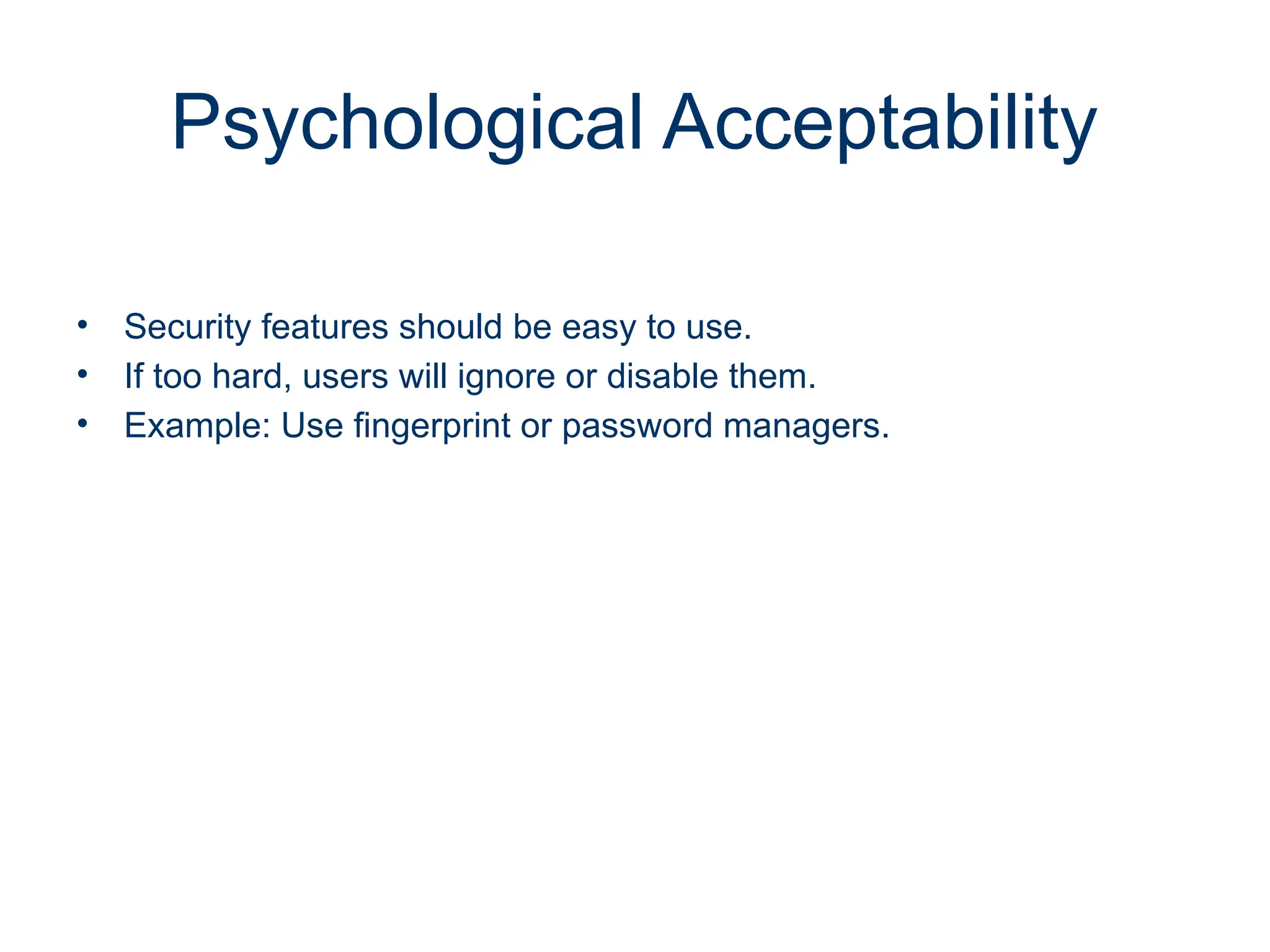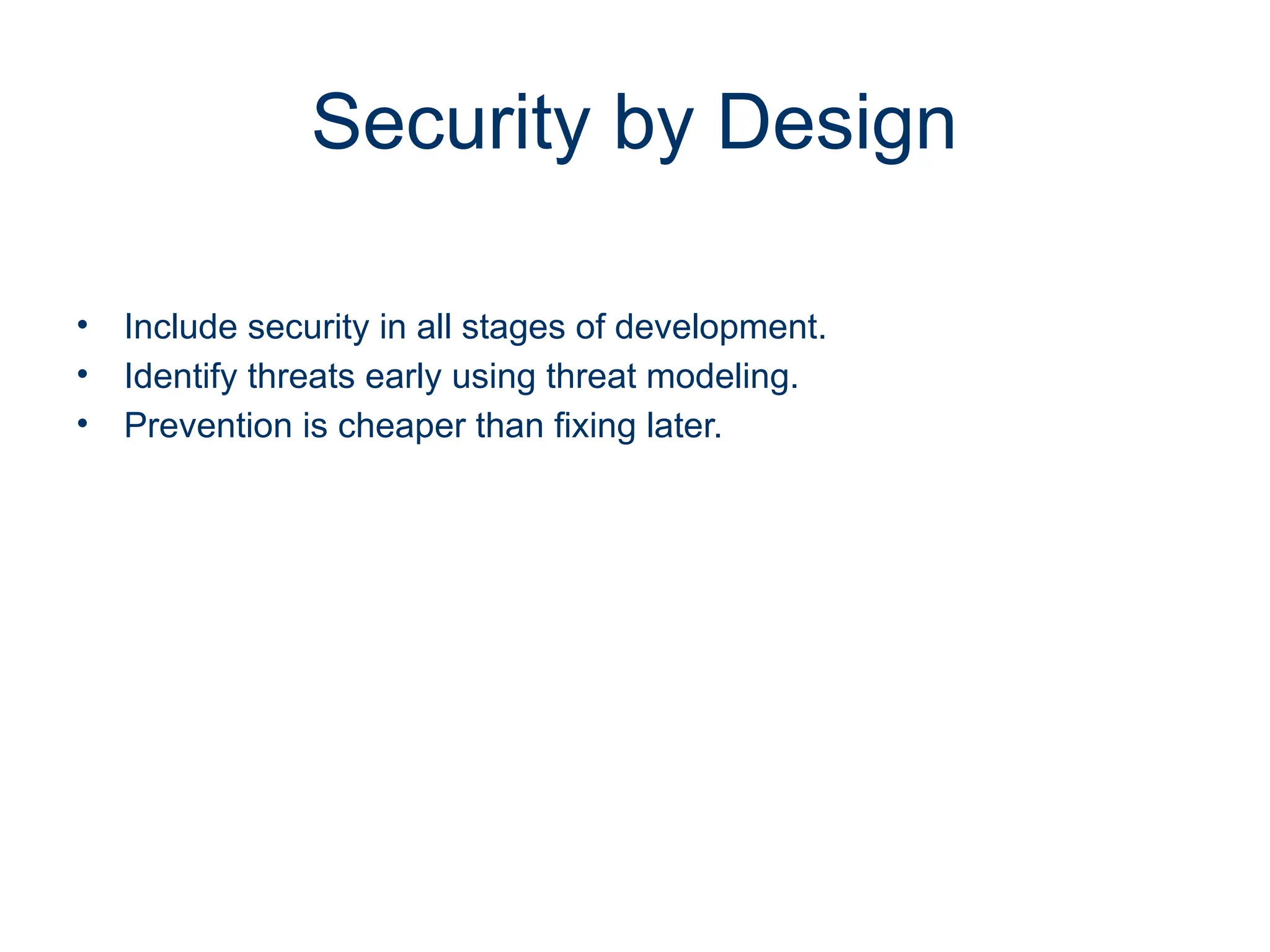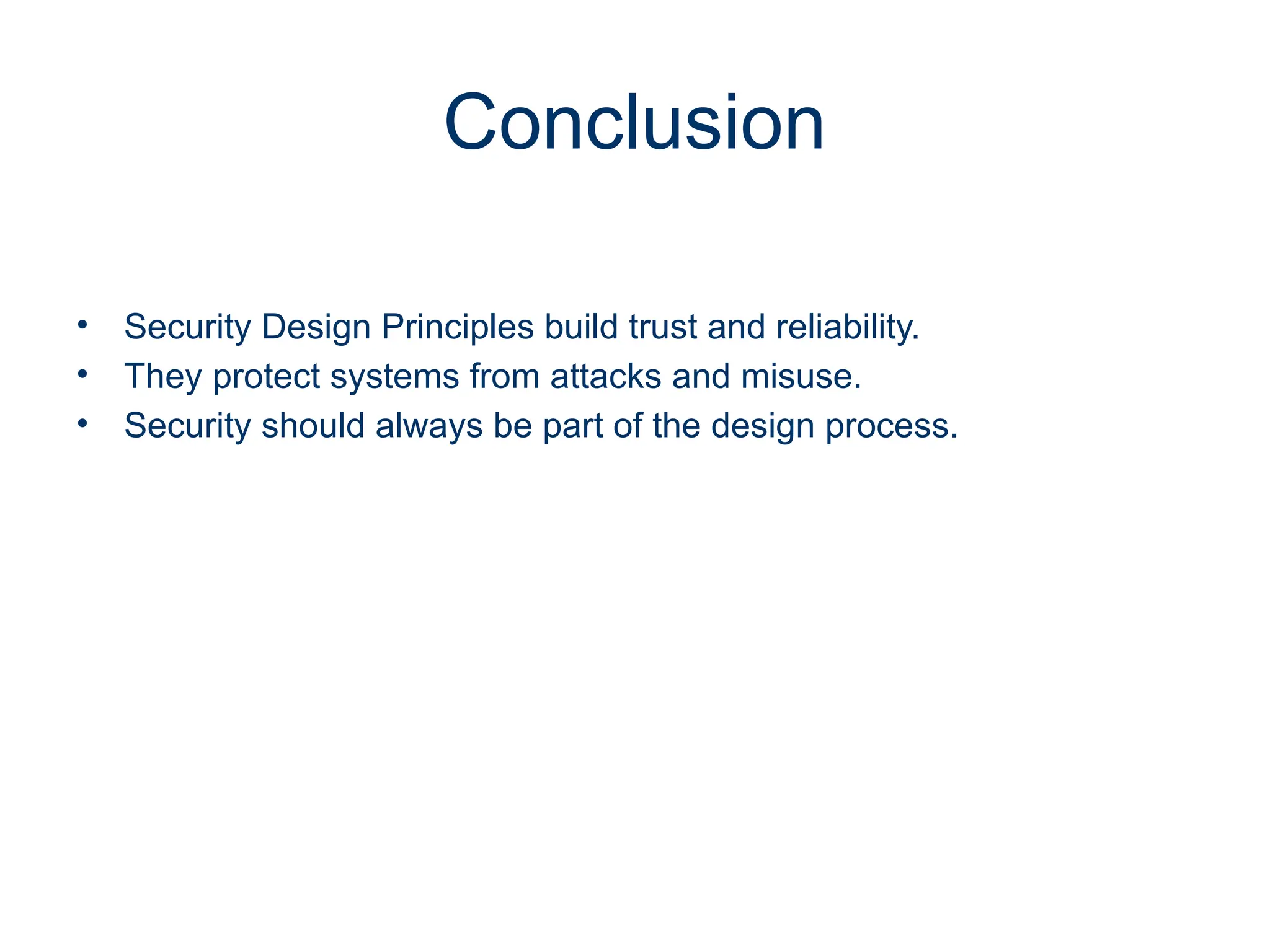Questions about the CIA Triad:
What is the CIA triad?
What does confidentiality mean in information security?
What does integrity mean in information security?
What does availability mean in information security?
Can you provide an example of a breach of confidentiality?
How can data integrity be protected?
Questions about the AAA Framework:
What is the AAA framework in information security?
What is the difference between authentication and authorization?
How is user activity logged and tracked?
What is the principle of "least privilege"?
Questions about Extended Principles:
What is the difference between authenticity and non-repudiation?
Why is accountability important in information security?
How does a digital signature contribute to non-repudiation?
Questions about Strategic Concepts:
What is defense in depth?
What are the different layers of defense used in a "defense in depth" strategy?
What is the role of risk management in information security?
What is information security governance?
General Questions:
What are the fundamental concepts of information security?
What are some core principles that modern information security relies on?

